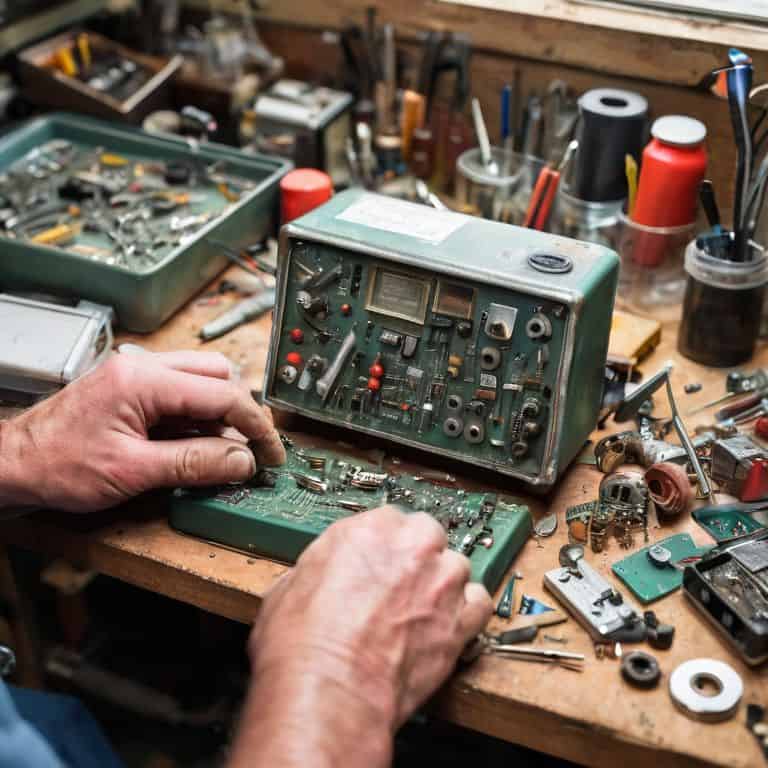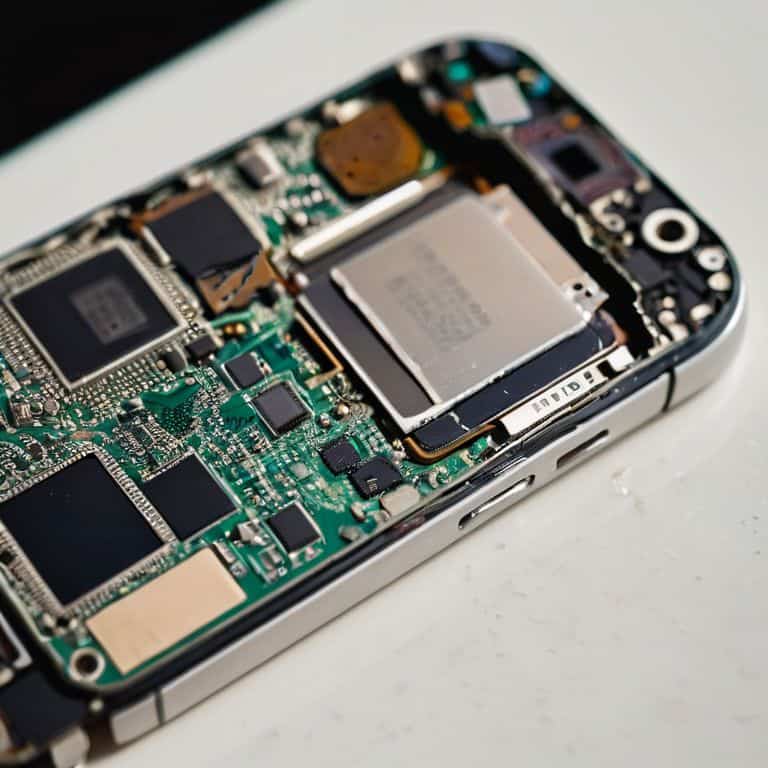I still remember the frustration I felt when my brand new smartphone started slowing down just a year after purchase. It was as if the manufacturer had intentionally designed it to become obsolete, forcing me to upgrade to a newer model. This is the problem with planned obsolescence: our gadgets are built to die, and it’s not just a minor inconvenience – it’s a deliberate strategy to keep us consuming. I’ve seen it time and time again in the tech industry, where devices are engineered with planned obsolescence in mind, making them disposable and wasteful.
As someone who’s spent years designing and reviewing gadgets, I’m here to tell you that there’s a better way. In this article, I’ll share my honest, no-nonsense take on the issue, highlighting the ways in which planned obsolescence affects not just our wallets, but also the environment. I’ll draw from my own experiences as a tech ethicist and gadget reviewer to provide actionable advice on how to make more informed purchasing decisions and reduce electronic waste. My goal is to empower you with the knowledge to make a change, to demand more from the tech industry, and to cultivate a healthier relationship with your devices.
Table of Contents
The Problem With Planned Obsolescence

As I delve into the world of gadgets, I’m constantly reminded of the dark underbelly of innovation. Planned obsolescence, the practice of designing products with a limited lifespan, is a stark reality that affects us all. It’s not just about our wallets; the environmental impact of obsolescence is a ticking time bomb. The sheer volume of electronic waste generated by discarded devices is staggering, and it’s an issue that demands attention.
The lack of design for repairability is a significant contributor to this problem. When products are built to be disposable, rather than durable, it perpetuates a cycle of waste and inefficiency. I’ve seen it time and time again in my own work as a tech ethicist: gadgets that could be easily repaired or upgraded are instead discarded and replaced, often due to deliberate design choices. This not only harms the environment but also undermines consumer protection laws, which are meant to safeguard our rights as buyers.
To combat this issue, we need to embrace sustainable product design and product lifespan extension strategies. By prioritizing durability, repairability, and recyclability, we can reduce electronic waste and create a more circular economy. It’s a complex challenge, but one that requires our collective attention and action. As someone who’s passionate about the unintended uses of technology, I believe that by hacking and reimagining our approach to product design, we can create a better future for ourselves and the planet.
Designing for Repair a Lost Art
As I tinker with my hand-cranked automatons, I’m reminded of the value of designing for repair. It’s an art that’s been lost in the pursuit of sleek, disposable gadgets.
By emphasizing modularity, manufacturers can create products that are easier to fix, reducing electronic waste and empowering consumers to take control of their devices.
Electronic Waste Management a Growing Concern
As I delve into the world of electronic waste, I’m struck by the sheer magnitude of the issue. Proper disposal of gadgets is a luxury many can’t afford, leading to a toxic cocktail of chemicals and heavy metals seeping into our soil and water. The consequences are far-reaching, from contaminated ecosystems to devastating health effects.
The lack of effective recycling programs is a major contributor to this crisis. Manufacturers often prioritize profit over sustainability, leaving consumers to bear the brunt of irresponsible waste management. It’s time for a paradigm shift, one that prioritizes the well-being of our planet over the pursuit of innovation at any cost.
Breaking Free From Obsolescence

As I see it, breaking free from obsolescence requires a fundamental shift in how we design and interact with technology. We need to start valuing _sustainable product design_ that prioritizes repairability and longevity over flashy new features and built-in expiration dates. This means designing products with modular components, easy access to internal parts, and clear documentation for DIY repairs. By doing so, we can significantly reduce _electronic waste management_ challenges and keep our gadgets out of landfills for longer.
To achieve this, we must also advocate for consumer protection laws that hold manufacturers accountable for the environmental impact of their products. This could include measures like product lifespan extension strategies, where companies are incentivized to create devices that can be easily repaired or upgraded, rather than replaced. By promoting a culture of repair and reuse, we can reduce the staggering amounts of waste generated by our throwaway society.
Ultimately, it’s up to us as consumers to demand better from the tech industry. We can start by supporting companies that prioritize design for repairability and embracing a more mindful approach to technology consumption. By doing so, we can create a more _circular economy_ where products are designed to be restored, reused, and recycled, rather than discarded and replaced.
Extending Product Lifespan a Key Strategy
To truly make a dent in the problem of planned obsolescence, we need to focus on extending product lifespan. This means designing products that are built to last, with high-quality materials and construction that can withstand the test of time. By doing so, we can reduce the amount of electronic waste that ends up in landfills and conserve the resources needed to produce new products.
By adopting a circular economy approach, manufacturers can encourage the reuse and recycling of their products, further reducing waste and the demand for new, resource-intensive devices. This not only benefits the environment but also helps to reduce the economic burden of constantly replacing outdated technology.
Sustainable Product Design the Future
As I see it, the key to a more sustainable future lies in rethinking product design. We need to move away from the current model of planned obsolescence and towards creating devices that are built to last. This means using high-quality materials, designing for repair and upgrade, and making products that are easy to recycle.
By adopting a more circular approach to design, we can reduce electronic waste and minimize the environmental impact of our gadgets. This not only benefits the planet, but also saves consumers money in the long run by reducing the need for frequent replacements.
5 Ways to Outsmart Planned Obsolescence
- Buy gadgets with repairability in mind: Look for products with modular designs, accessible components, and clear repair guides
- Choose devices with open-source software: This can extend the lifespan of your gadget and reduce electronic waste
- Update, don’t upgrade: Regularly update your device’s software to ensure it remains compatible with new technologies and security patches
- Support right-to-repair legislation: Advocate for policies that promote repair, reuse, and recycling of electronic devices
- Consider buying refurbished or second-hand gadgets: This reduces demand for new, resource-intensive devices and helps minimize electronic waste
Key Takeaways to Overcome Planned Obsolescence
Recognize the financial and environmental toll of planned obsolescence and demand longer-lasting, repairable products from manufacturers
Support and adopt sustainable product design principles that prioritize durability, recyclability, and energy efficiency to reduce electronic waste
Empower yourself with knowledge on extending product lifespan through DIY repairs, upgrading, and repurposing to break free from the cycle of obsolescence and promote a healthier relationship with technology
Breaking the Cycle of Obsolescence

As we’ve explored the issue of planned obsolescence, it’s clear that designing for repair and sustainable product design are crucial steps towards a more environmentally friendly and consumer-conscious tech industry. We’ve seen how the lack of emphasis on repair and the rapid pace of technological advancements have led to a culture of disposability, resulting in staggering amounts of electronic waste. However, by extending product lifespan and encouraging innovation in sustainable design, we can begin to shift the paradigm and create a more circular economy.
So, what’s the way forward? It’s time for us to reimagine our relationship with technology and demand more from the companies that create these devices. By supporting sustainable tech practices and advocating for policy changes that promote repair and recycling, we can break free from the cycle of obsolescence and create a brighter, more sustainable future for ourselves and for generations to come.
Frequently Asked Questions
How can consumers make informed decisions when purchasing electronics to avoid contributing to planned obsolescence?
To make informed decisions, consumers should research the product’s repairability, look for brands that offer sustainable design and maintenance options, and check for certifications like energy efficiency ratings. It’s also crucial to read reviews from multiple sources and consider the overall cost of ownership, not just the initial purchase price.
What role do governments and regulatory bodies play in addressing the issue of planned obsolescence in the tech industry?
Governments and regulatory bodies can be game-changers in the fight against planned obsolescence. By implementing and enforcing stricter laws and standards, they can push the tech industry to design more sustainable products. It’s time for policymakers to step up and hold manufacturers accountable for their environmental impact.
Are there any existing alternatives or innovations that could potentially replace traditional planned obsolescence models with more sustainable approaches?
Absolutely, I’m excited about the rise of modular smartphones and laptops, where users can easily swap out components, extending the product’s lifespan and reducing waste. Companies like Fairphone and Framework are pioneering this approach, giving consumers more control over their devices and promoting a more circular economy.
